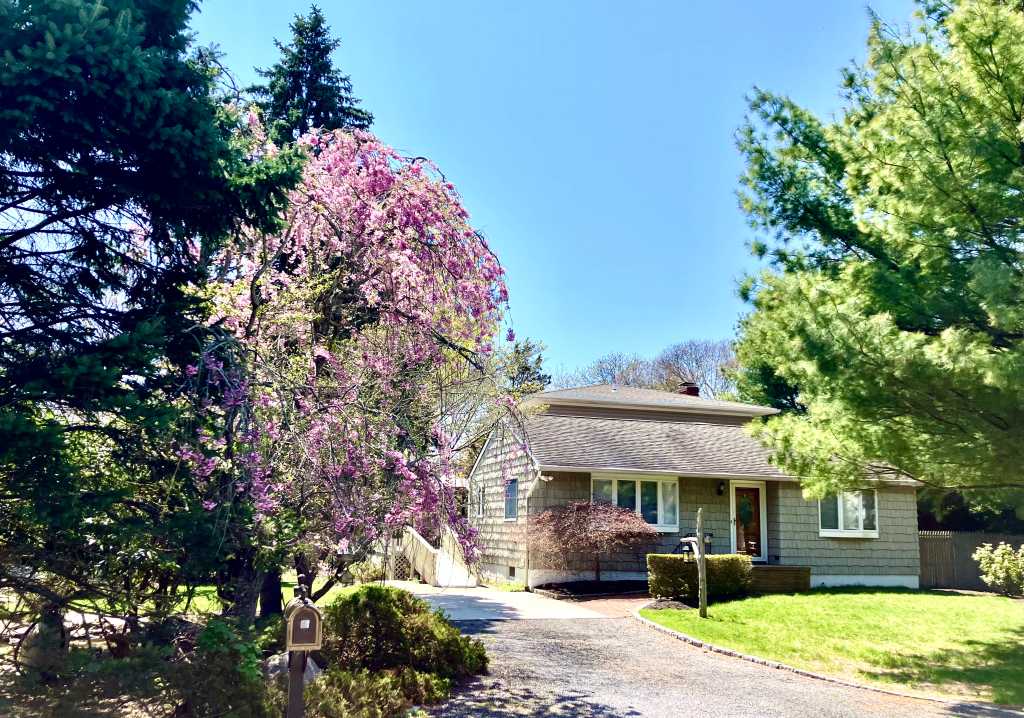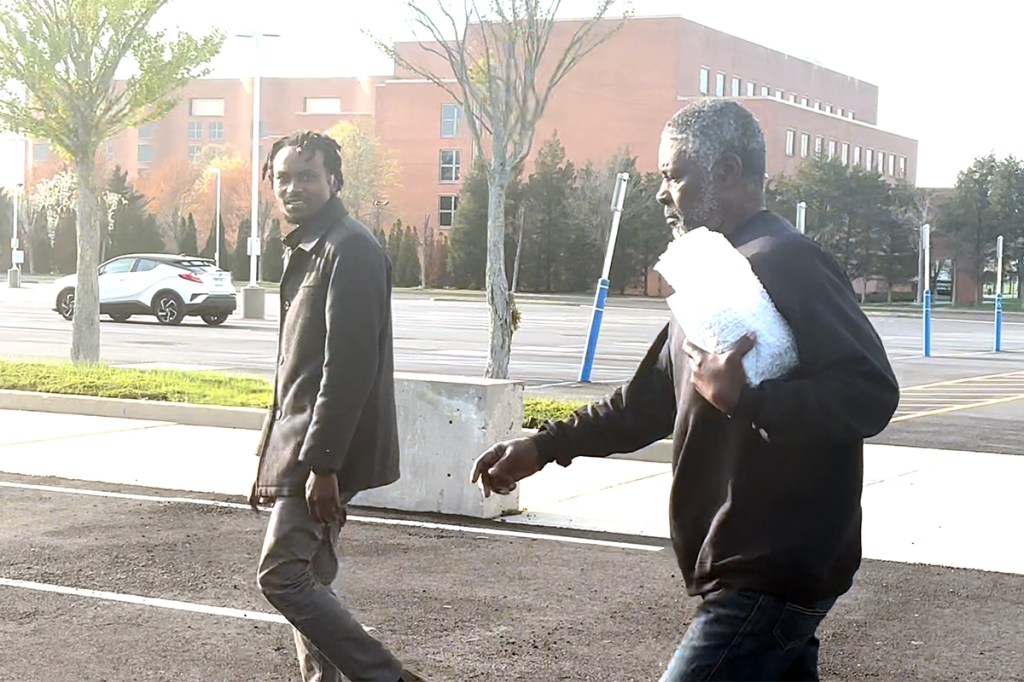200th Anniversary: In the War of 1812, We Lost Battles but Celebrate, Here, We Won

There have been a lot of activities going on along the East Coast to celebrate the War of 1812. This year is the 200th anniversary of that war. Oddly, though there are celebrations in Baltimore, Boston, Greenport (where the Tall Ships came in for a weekend) and most recently, as I learned in a letter I got from a man named Gerald B. Dubey, festivities in Essex, Connecticut, there have been none in Sag Harbor.
There should be a celebration in Sag Harbor. Everywhere else that they are celebrating, they celebrate defeat because that is what the War of 1812 was about on the American side. In Sag Harbor, however, a battle with British redcoats, who had landed at Long Wharf, led to an American victory. Sag Harbor is always looking for something to celebrate. This is surely it.
The reason we had a War of 1812 with Britain—didn’t we have one just 25 years earlier?—was because President Madison was unable to work out problems with the British through diplomacy, gave that up, and had Congress declare war. Surely it was not a good thing to do. The British Navy had 20 Men o’ War and a fleet of about 500 ships. President Madison’s Navy consisted of 16 frigates, none of which qualified as a Man o’ War. We were a mouse, picking a fight with an elephant.
The causes of the war are worth mentioning. After the Revolution, our new country began a brisk trade with England and France. Boston, New York, Baltimore, Philadelphia and Charleston became bustling port cities. Smaller port towns, Sag Harbor among them, also prospered.
In 1804, however, Napoleon had crowned himself Emperor of France and began fighting to take over the civilized world. Among other things he did was halt American shipping going to England. As a result of this, England began stopping American ships going to France. America had nothing to do with this and appealed to both countries to stop it. A further problem was that the British were stopping American ships on the high seas and no matter where they were bound, were taking British seamen who had taken work on American ships into captivity to forcibly cause them to join the British Navy. There were numerous incidents where British sailors also took American seamen and impressed them into the British Navy. This could not go on. The Americans tried to get the British Navy and the French Navy to stop all this. Napoleon said he would, but then didn’t. The English said they would too, but their announcement of it took two weeks to get to President Madison, and before it arrived, Congress had declared war.
Indeed, there were battles fought. Some were in Canada, where British troops landed to try to attack down from the north. Other battles were held in Detroit and what is now Toronto. Probably the largest battle was in New Orleans where the Americans drove out the British. But that battle took place nearly a month after the war ended. Again, there were communications problems everywhere. These people were communicating by messenger on horseback.
The main thing the British wanted to do was to sink America’s ships docked along the shoreline of various ports in this country. How they would do this was simple. They would bring a part of their navy offshore and bombard a port for awhile, then send soldiers ashore who would set fire not only to the boats but also, if possible, the town. Shipping stuff to France? There will be no more of that.
In the end, during the month of November, 1814, the two sides agreed to stop fighting and move back to the borders that they had when the fighting started. A careful reading of the treaty—The Treaty of Ghent—signed in December, 1814, shows however that the sides never came to any conclusions about the things that caused the war to start in the first place.
In the letter Gerald Dubey sent me, he enclosed an article, which spelled out what they were celebrating. They were celebrating the burning of the ships by the British all up and down the Connecticut River. Essex, Connecticut, was pretty far up that river. But the British burned all the boats there too.
I once witnessed another celebration of that war. I was visiting St. Charles, Maryland. That waterfront town celebrates that when the British came to burn all the boats, the locals hid all the boats up in a narrow bay, and then strung lanterns through the trees of a woods nearby so that the British, when they came, at night. they would bombard and “sink” a woods. The British did come, they fell for the ruse, fired all their weapons, set fire to the woods, and then left.
None of this would seem worth celebrating. Indeed there was something even worse. The British warships went all the way up the Potomac and set fire to Washington. As they headed for the White House, with their torches ablaze, Dolley Madison, absent her husband, rallied the servants to gather up all the silver and other values and rush them away by horse and carriage. Shortly thereafter, the British entered to find in the dining room the table laden with food for a quickly forgotten dinner. They set fire to everything anyway.
So what was different in Sag Harbor? Sag Harbor sure lost the battle at the beginning. The British Men-o-War fired cannonball after cannonball into the town. Most of the residents left. What remained were some young men with muskets, some of whom were in uniform serving a brigade headed up by Abraham Rose of Bridgehampton.
What the British were after, of course, were the boats tied up at Long Wharf in Sag Harbor. There were about 200 of them, ranging from rowboats to small packet boats. Some of the cannonballs ripped through these boats, sinking them. Others came through town. A woman who wrote a diary about this encounter described seeing cannonballs “whistling through the trees and bang into buildings. Sometimes, after landing, they’d simply roll back down the street toward the wharf.”
Rose wrote of what was going on to President Madison and a week later received a reply ordering him to call together as many men as were available to defend the town.
That Sunday, as the local church service was ending, Rose got up and asked every young man in the town to volunteer for this service. Thirty did so.
He then ordered all the women and children to leave town and move inland to Bridgehampton and East and Southampton to be out of the way.
The next day, he sent messengers out on horseback to ask for all other young men in the area to come to Sag Harbor. In the end, he had a force of 1,000 men eager to help.
General Rose then ordered some of them down to the shoreline and for a mile in each direction alongside Long Wharf to stand watch all day and night. If the British were starting to row soldiers off from the Men o’ War—they estimated the British had about 4,000 redcoats available—they should fire their rifles at one minute intervals, then follow that with three minutes of silence.
Meanwhile, other members of the militia wheeled out an old revolutionary war cannon known as a 19-pounder that was stored in a barn nearby. They wheeled this monster up to the top of a small rise not far from Long Wharf and aimed it at the end of the Wharf. They did not have any cannonballs large enough to fit down the barrel. What they did have were barrels of nails. They had enough of them to fire the cannon five or six times
The British only bombarded at night after this. Occasionally the ships would head off a bit to try to trick the volunteers on the beach into thinking they were leaving. But then they would come back.
At 2 a.m. on July 11, 1813, the British finally moved to establish a foothold on Long Wharf. They rowed in a force of 50 redcoats and landed here and began to set up fortifications. The alarms were sounded. The six men who were to fire this cannon rushed up Turkey Hill to the cannon and began jamming nails into its barrel. Then they waited for a signal from General Rose.
Finally, it seemed, all the redcoats who were coming ashore had done so. They were not a large force, they were a sort of expeditionary force, and they did not believe they had been seen. Then the 19-pounder opened up. The battle didn’t last long. There was no hand-to-hand combat. Instead, the British fired the weapons they had set up at the Wharf and when that had little effect, they laid low behind their defenses hoping more redcoats would come. None did. After a time, the British got back in their longboats and raced back out to the Men o’ War, throwing torches and setting fire to many boats at the wharf as they went.
The British ships remained in the harbor for several days after that, but then they moved on, intending to find easier quarry. Soon after that, General Rose allowed that the women and children could return to their homes.
You could note that this battle for Sag Harbor took place in June of 1813, midway through the war. From our perspective, therefore, there is still time to plan a celebration. Sag Harbor celebrates HarborFest in the fall and HarborFrost in the winter. It would seem perfect for a re-enactment to be put together on Long Wharf. There are plenty of militias out here who would love to do this. (I volunteer to be Brigadier General Rose. I have a white beard.) After the battle we could eat, drink and be merry. We could also do it beforehand too.
After all, the battle took place at two o’clock in the morning.



